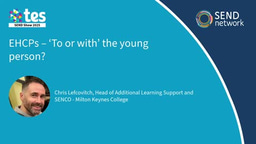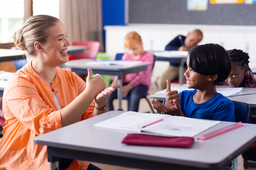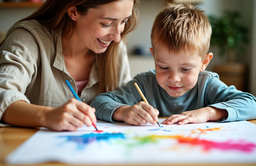Upcoming changes to the Early Years Foundation Stage (EYFS) framework from September 2025

The Early Years Foundation Stage (EYFS) (DFE, 2024) framework outlines the standards and statutory requirements that all early years providers must implement to ensure that all children can learn and develop to their full potential. The EYFS is regularly reviewed and updated by the Department for Education to ensure it reflects the most up-to-date changes within government policy and legislation. As early years practitioners, it is your responsibility to know about any changes and updates to the EYFS, to ensure that you continue to deliver high-quality care and education. The EYFS update will be introduced into practice from September 2025. This article aims to provide an overview of these changes and its effect on your practice.
The key changes to safeguarding and welfare requirements:
A key underpinning principle within the EYFS is to ensure that all children are kept healthy and safe. To help all early years practitioners understand their statutory roles and responsibilities towards keeping children safe and well, the EYFS sets out key safeguarding and welfare requirements. The overall aim of changes, which will be introduced this September, is to strengthen the safeguarding requirements and improve child safety while also ensuring a supportive and secure environment for both children and practitioners. The current safeguarding and welfare requirements will also be re-worded and re-structured to ensure that they are clearer and more concise so that all practitioners understand what is expected of them. Although the final detailed version of the updated EYFS has yet to be published, it is proposed that the key changes will include;
Safer recruitment practices:
All early years providers are required to ensure that every person looking after children is suitable and that they hold the relevant qualifications and obtain an enhanced criminal record check. This will remain the same under the new changes. However, to strengthen the requirement, all early years providers need evidence that they are continuing to implement safer recruitment practices and will be required to obtain references for all new staff. This requirement should also be outlined within the settings/providers' safeguarding policies and procedures to show clearly how new staff are verified and deemed suitable individuals to be recruited.
Monitoring absences and emergency contacts:
From September, all Providers will need to monitor absences and make contact/follow up with a child’s parents/carers if they are absent for an extended period. All providers typically hold personal information on each child, which includes having emergency contact details. It will be a new requirement that providers must ensure that all emergency contact details are collected and updated. This may include checking regularly with parents/carers that the information which they hold is still current.
Safer eating practices:
The new guidelines will outline how providers can ensure that all eating environments are safe and can prevent choking hazards, which includes ensuring that food is appropriate for individual children’s age and stage of development. Providers must also collect relevant information on individual children’s dietary requirements.
Safeguarding training:
Currently, all practitioners must receive training to ensure that they understand their provider's safeguarding policies and procedures. They must all receive training on how to identify and respond to safeguarding issues and/or concerns. From September, a new safeguarding training annex will be set out, which will require providers to clearly outline how training is delivered and how practitioners are supported to implement it into their practice.
Paediatric first aid for students:
Early years students and trainees can currently be included in ratios with children below their level of study. This requirement will remain; however, it will be strengthened to ensure that all students and trainees must complete paediatric first aid before they can be included in ratios.
Children’s privacy in toileting and nappy changing:
Caring for young children often includes attending to and meeting their personal care needs. When doing so, all children should be treated with care, respect and dignity. The new changes to the EYFS will provide clearer procedures on how to ensure practitioners are respecting children’s privacy and dignity, while also adhering to safeguarding practices during toileting and nappy changing.
Building a culture of safeguarding
Every individual early years practitioner must follow all of the safeguarding and welfare requirements, however, working together as a team within an early years setting can support good practice to ensure that all children are kept healthy and safe. A fundamental aspect of this is to create an environment and culture within the setting that supports everyone, including practitioners, students and parents in understanding that safeguarding is everyone’s responsibility. From September, there will be a stronger emphasis on creating and maintaining a culture of safeguarding. Key elements of creating this culture will include;
Child-centered practices:
Children should always be at the centre of practice and all safeguarding policies should prioritise their health and safety. A key part of this is to ensure that children’s voices are listened to and taken into consideration. It is also important that children are in an environment where they feel safe and supported.
Ongoing training:
Training is an important aspect of good practice, and all practitioners should be able to access and receive regular safeguarding training. All practitioners need to ensure they stay informed and build their confidence in being able to identify, respond and report any concerns.
Clear reporting systems:
All providers should ensure that safeguarding policies and procedures are in place that clearly outline accessible and transparent channels on how and who safeguarding issues should be reported to.
Furthermore, as part of creating an effective safeguarding culture, under the upcoming changes within the EYFS, it will also be a requirement that all providers must have clear and concise procedures for whistleblowing. This is to strengthen existing statutory guidance and to encourage all practitioners to report concerns without fear of any reprimand.
Positive role models:
Young children learn and are influenced by the key people around them. All practitioners working with young children should ensure that they are acting as positive role models. This includes ensuring that they model safe, respectful behaviour, both towards children and the other people that they work alongside. Practitioners should also develop trusting and secure relationships with children to help foster their mental health and wellbeing.
Partnership with parents/carers:
It is important that parents/carers feel welcome, respected, valued and are supported in developing a good rapport with practitioners. As previously highlighted within this article, safeguarding is everyone’s responsibility, and it is most effective when parents/carers are engaged and informed about policies and procedures within the setting. Parents/carers must also be aware of how they can discuss and report any safeguarding concerns that they may have.
Conclusion
Although this article has highlighted some of the key changes to the EYFS from September, it is ultimately the role and responsibility of providers to implement it within their practice. All providers and practitioners have statutory roles and responsibilities to ensure that children are kept healthy and safe. Clear policies and procedures should be in place and made accessible to parents and carers as well. However, safeguarding young children also goes beyond policy and procedures. All providers should work in partnership with practitioners, parents/carers and children to embed the safety and welfare of children into everyday practice and within all aspects of the environment. Providers need to strive towards creating a child-centered, strong and proactive safeguarding culture where every child feels safe and secure.






Please sign in or register for FREE
If you are a registered user on SEND Network, please sign in